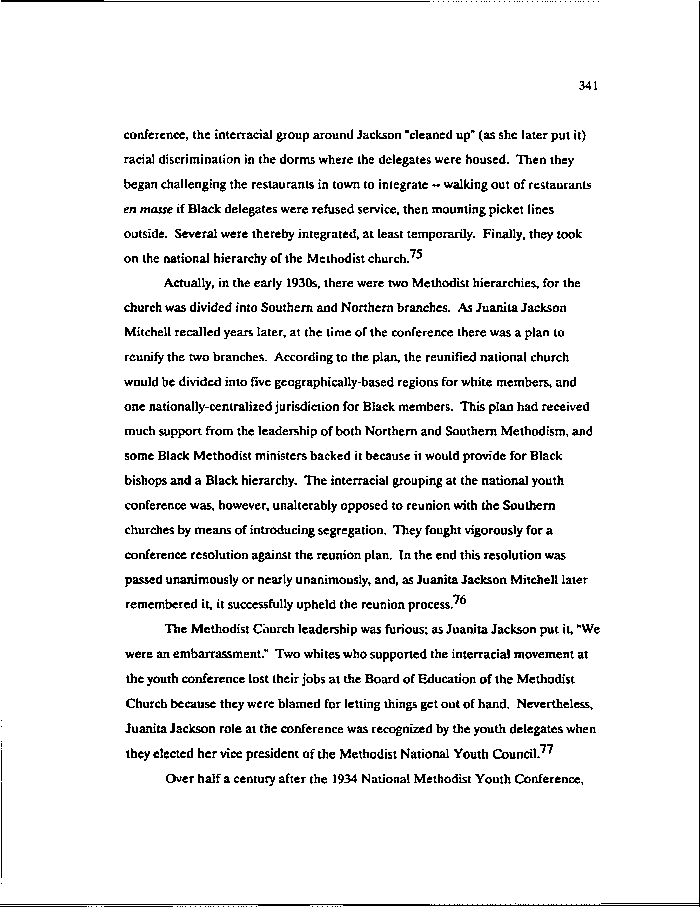|
341
conference, the interracial group around Jackson "cleaned up" (as she later put it)
racial discrimination in the dorms where the delegates were housed. Then they
began challenging the restaurants in town to integrate ~ walking out of restaurants
en masse if Black delegates were refused service, then mounting picket lines
outside. Several were thereby integrated, at least temporarily. Finally, they took
on the national hierarchy of the Methodist church/-5
Actually, in the early 1930s, there were two Methodist hierarchies, for the
church was divided into Southern and Northern branches. As Juanita Jackson
Mitchell recalled years later, at the time of the conference there was a plan to
reunify the two branches. According to the plan, the reunified national church
would be divided into five geographically-based regions for white members, and
one nationally-centralized jurisdiction for Black members. This plan had received
much support from the leadership of both Northern and Southern Methodism, and
some Black Methodist ministers backed it because it would provide for Black
bishops and a Black hierarchy. The interracial grouping at the national youth
conference was, however, unalterably opposed to reunion with the Southern
churches by means of introducing segregation. They fought vigorously for a
conference resolution against the reunion plan. In the end this resolution was
passed unanimously or nearly unanimously, and, as Juanita Jackson Mitchell later
7/i
remembered it, it successfully upheld the reunion process.
The Methodist Church leadership was furious; as Juanita Jackson put it, "We
were an embarrassment." Two whites who supported the interracial movement at
the youth conference lost their jobs at the Board of Education of the Methodist
Church because they were blamed for letting things get out of hand. Nevertheless,
Juanita Jackson role at the conference was recognized by the youth delegates when
they elected her vice president of the Methodist National Youth Council.7^
Over half a century after the 1934 National Methodist Youth Conference,
|

